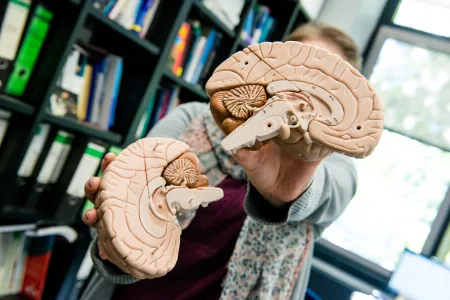
The Bochum researchers Pauline Bohne (left) and Melanie Mark
Neurobiology
New Insights into the Molecular Basis of Ataxia
People with ataxia often experience stress-induced motor incoordination. Researchers have now discovered which receptor is responsible for this.
Researchers at Ruhr University Bochum, Germany, identified a receptor that plays a crucial role in stress-induced motor incoordination associated with ataxias. These hereditary motor disorders have long been linked to the neurotransmitter norepinephrine. The team, led by Dr. Pauline Bohne and Professor Melanie Mark from the Behavioral Neurobiology Working Group in Bochum, has now shown that the α1D norepinephrine receptor in the cerebellum is responsible for the symptoms. The team reports on these findings in the journal Cellular and Molecular Life Sciences from October 6, 2025.
The messenger substance norepinephrine plays a decisive role.
People with ataxia experience recurring episodes of motor incoordination, also known as dystonia. These phases are triggered by various factors, such as physical or emotional stress, fever, alcohol, or caffeine. The episodes are triggered by the release of norepinephrine in the cerebellum, which is the most important brain region for coordinating movement. Currently, there is no cure for ataxia. Therefore, researchers want to gain a better understanding of the underlying mechanisms to find new treatment approaches.
The researchers in Bochum investigated the role of norepinephrine receptors in mice with ataxia-like movement disorders. Previous research has shown that stress-induced dystonia is associated with irregular activity of certain nerve cells, the Purkinje cells in the cerebellum. The researchers have now demonstrated that the α1D receptor plays a pivotal role in this process. When the scientists switched off the receptor, either genetically or pharmacologically, the mice experienced few or no episodes of dystonia. Blocking the receptor with a specific active substance furthermore restored normal activity of the Purkinje cells.
Potential new therapeutic approach
“We hope that with the α1D receptor, we have found a new approach to prevent stress-induced dystonia in patients with ataxia type 2,” says Pauline Bohne. However, further studies are needed to determine if the results can be applied to humans and thus to the clinic.
